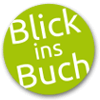Itinéraire Des Routes Les Plus Fréquentées, Ou, Journal De Plusieurs Voyages Aux Villes Principales De L'europe, Depuis 1768 Jusqu'en 1783... offre un aperçu fascinant de l'Europe du XVIIIe siècle à travers les yeux de Louis Dutens. Ce journal de voyage détaille les itinéraires les plus empruntés et les villes principales du continent, offrant une perspective unique sur les cultures, les sociétés et les paysages de l'époque.
Rédigé en français, ce récit de voyage est une ressource précieuse pour les historiens, les amateurs de voyages historiques et tous ceux qui s'intéressent à la vie européenne au XVIIIe siècle. Dutens capture l'essence de ses voyages, rendant ce livre à la fois informatif et captivant. This work has been selected by scholars as being culturally important, and is part of the knowledge base of civilization as we know it. This work was reproduced from the original artifact, and remains as true to the original work as possible. Therefore, you will see the original copyright references, library stamps (as most of these works have been housed in our most important libraries around the world), and other notations in the work. This work is in the public domain in the United States of America, and possibly other nations. Within the United States, you may freely copy and distribute this work, as no entity (individual or corporate) has a copyright on the body of the work. As a reproduction of a historical artifact, this work may contain missing or blurred pages, poor pictures, errant marks, etc. Scholars believe, and we concur, that this work is important enough to be preserved, reproduced, and made generally available to the public. We appreciate your support of the preservation process, and thank you for being an important part of keeping this knowledge alive and relevant.
 Und dann auf "Zum Home-Bildschirm [+]".
Und dann auf "Zum Home-Bildschirm [+]".










